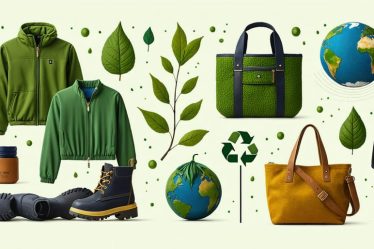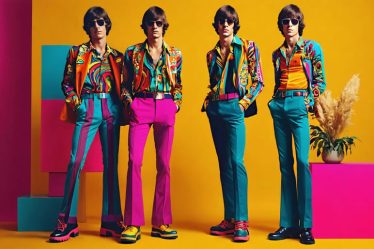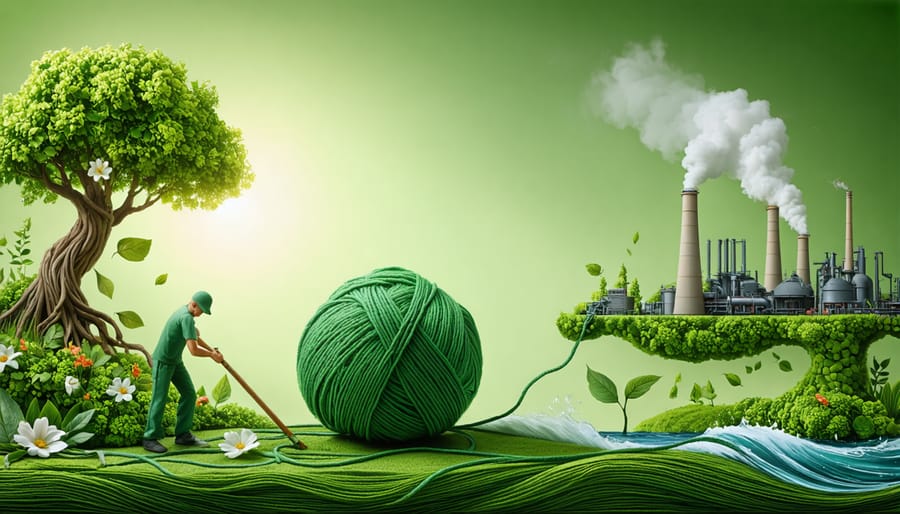
Transform your crafting journey with eco-friendly yarn that’s as kind to the planet as it is beautiful to work with. As more crafters embrace sustainable fashion choices, the world of ethical yarn has blossomed into a vibrant marketplace of environmentally conscious options. From organic cotton spun without harmful pesticides to recycled fibers that give plastic bottles a second life, today’s eco-friendly yarns offer the perfect blend of craftsmanship and conservation.
Gone are the days when sustainable meant sacrificing quality or color selection. Modern eco-friendly yarns rival their traditional counterparts in softness, durability, and versatility, while significantly reducing their environmental footprint. Whether you’re a seasoned knitter or just beginning your sustainable crafting journey, choosing earth-friendly yarn isn’t just a trend—it’s a meaningful way to weave environmental responsibility into every stitch of your creative process.
Why Traditional Yarn Isn’t as Green as You Think
The Hidden Environmental Cost
While eco-friendly yarn sounds wonderful on the surface, it’s important to understand the full environmental picture. Even natural fibers like cotton and wool come with hidden costs. Traditional cotton farming, for instance, requires an astounding 2,700 liters of water to produce enough cotton for just one t-shirt’s worth of yarn. And that’s before we consider the pesticides and fertilizers that often seep into our waterways.
I learned this firsthand when visiting a local sheep farm. While the wool seemed perfectly natural, the cleaning and processing required numerous chemical treatments to make it suitable for spinning. Even bamboo yarn, often marketed as eco-friendly, undergoes intensive chemical processing to transform woody fibers into soft, workable strands.
The carbon footprint extends beyond production too – from transportation to packaging. But don’t feel discouraged! Being aware of these hidden costs helps us make more informed choices and support truly sustainable alternatives.
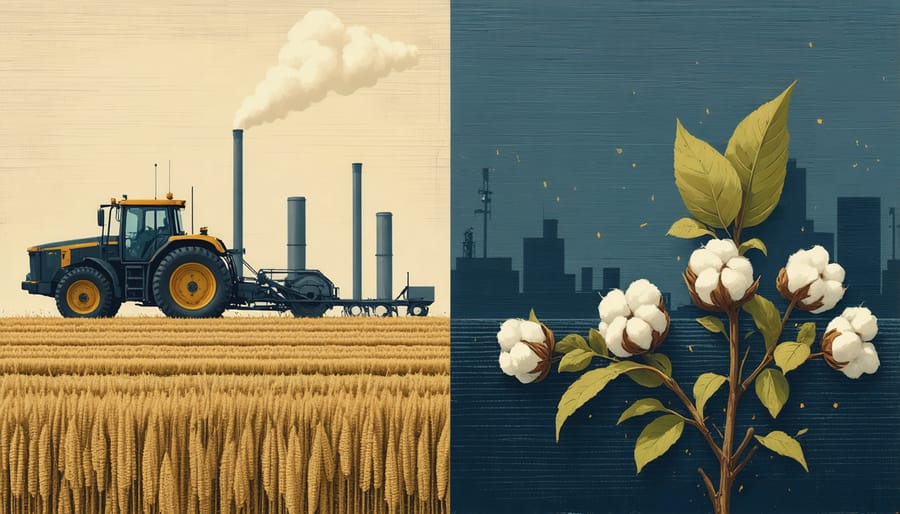
Animal Welfare Concerns
While traditional wool production has given us beautiful yarns for generations, it’s important to acknowledge the ethical considerations in sheep farming practices. Many crafters are becoming increasingly aware of mulesing – a controversial practice used primarily in merino wool production – and seeking more humane alternatives. The good news is that many farmers are embracing certified ethical wool production methods, ensuring their sheep are treated with care and respect throughout their lives.
I recently visited a small family farm that practices ethical wool harvesting, and it was heartwarming to see the sheep freely roaming spacious pastures, receiving regular veterinary care, and being handled gently during shearing season. More yarn producers are now partnering with farms that prioritize animal welfare, offering transparency about their sourcing practices. Look for certifications like the Responsible Wool Standard (RWS) or organic certification, which ensure strict animal welfare guidelines are followed. These standards help create a more compassionate craft industry while maintaining the high quality we love in natural wool yarns.
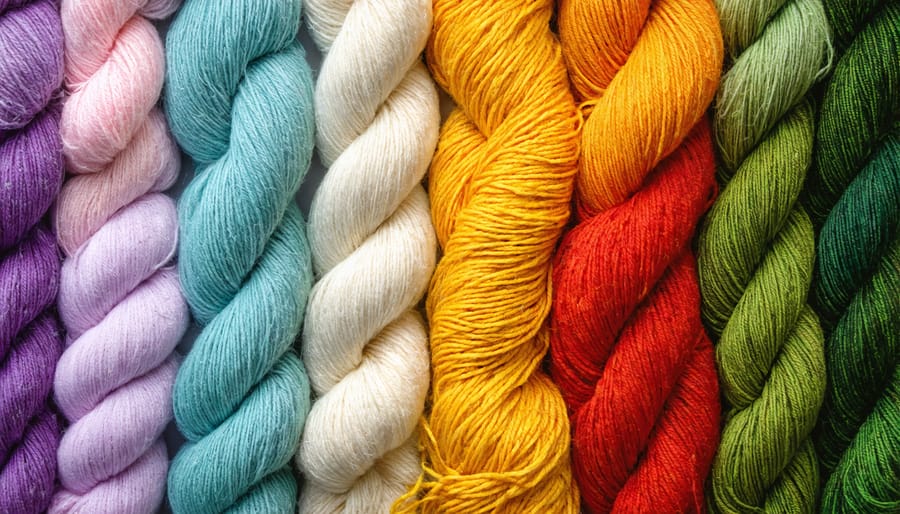
Sustainable Alternatives Taking the Craft World by Storm
Organic Cotton and Hemp Yarns
When it comes to creating beautiful, sustainable projects, organic cotton and hemp yarns are leading the way in eco-friendly fashion alternatives. These plant-based options offer crafters a wonderful combination of durability, comfort, and environmental consciousness.
Organic cotton yarn feels incredibly soft against the skin and gets even softer with each wash. Unlike conventional cotton, it’s grown without harmful pesticides or synthetic fertilizers, making it safer for both farmers and end users. I’ve found that organic cotton works beautifully for baby clothes and summer garments, as it’s breathable and gentle on sensitive skin.
Hemp yarn, though less common, is quickly gaining popularity in the crafting community. It’s one of the most sustainable fibers available, requiring minimal water and no pesticides to grow. Hemp yarn has natural antimicrobial properties and becomes softer over time while maintaining its strength. I particularly love using hemp for market bags and home accessories because of its incredible durability.
Both these yarns come in beautiful natural shades, from creamy whites to earthy browns, though they also take natural dyes beautifully. When working with these fibers, you’ll notice they have less stretch than synthetic yarns, but this actually helps your finished pieces maintain their shape better over time. Whether you’re new to eco-conscious crafting or a seasoned pro, these yarns offer endless possibilities for creating sustainable, beautiful pieces that last.
Recycled Fiber Innovations
Remember when recycled materials meant compromising on quality? Those days are long gone! I recently visited a modern yarn recycling facility and was amazed by how technology has transformed discarded plastic bottles and textile waste into premium yarns that rival their conventional counterparts.
Today’s recycling innovations use advanced mechanical and chemical processes to break down materials into their basic fibers. These are then carefully refined and spun into yarns that are soft, durable, and perfect for crafting. For instance, recycled PET bottles undergo a fascinating transformation – they’re cleaned, shredded, melted, and extruded into fine fibers that can be spun into yarn that’s remarkably similar to virgin polyester.
What I love most about these innovations is how they’re giving new life to materials that would otherwise end up in landfills. One recycled sweater’s worth of yarn can keep up to 25 plastic bottles out of our oceans! Many leading yarn manufacturers now offer recycled options that perform just as well as traditional yarns, with the added benefit of reducing environmental impact.
The quality is so impressive that even luxury fashion brands are incorporating recycled yarns into their collections. From recycled cotton to innovative blends using reclaimed fishing nets, these yarns are proving that sustainability doesn’t mean sacrificing quality or creativity.
Bamboo and Tencel Yarns
When I first discovered bamboo and Tencel yarns, I was amazed by how incredibly soft they felt – like running your fingers through clouds! These sustainable wood-based alternatives have become increasingly popular among eco-conscious crafters, and it’s easy to see why.
Bamboo yarn, derived from fast-growing bamboo plants, offers natural antibacterial properties and excellent moisture-wicking capabilities. It creates beautifully draping garments that feel cool against the skin, making it perfect for summer wear and baby items. I’ve found that bamboo yarn produces incredibly breathable fabrics that maintain their softness even after multiple washes.
Tencel, also known as Lyocell, comes from sustainably harvested eucalyptus trees and is produced in a closed-loop system that reuses water and solvents. The result is a silky-smooth yarn that rivals the softness of traditional silk while being much more environmentally friendly. What I love most about Tencel is its versatility – it works beautifully in both delicate shawls and everyday wear.
Both these yarns share some wonderful characteristics: they’re biodegradable, require minimal water to produce compared to cotton, and don’t rely on harmful pesticides. While they might cost a bit more than conventional yarns, their durability and eco-friendly properties make them worth the investment. Plus, the luxurious feel of your finished projects will have everyone asking where you got such beautiful yarn!
Making the Switch: What to Look For
Certification Labels Worth Trusting
When shopping for eco-friendly yarn, certain certification labels can help you make informed choices. Think of these labels as your trusty guides in the sustainable crafting journey! The Global Organic Textile Standard (GOTS) is considered the gold standard for organic fibers. When you spot this label, you can be confident that at least 95% of the fibers are organic and processed without harmful chemicals.
Another reliable certification is the OEKO-TEX Standard 100, which ensures your yarn is free from harmful substances. As a knitter myself, I love knowing my projects are safe for sensitive skin, especially when making baby items!
The Responsible Wool Standard (RWS) is your go-to for animal welfare assurance. It guarantees that wool comes from farms prioritizing both sheep welfare and land management practices. For plant-based options, look for the Forest Stewardship Council (FSC) certification on bamboo and wood-derived yarns.
Fair Trade certification goes beyond environmental concerns, ensuring fair wages and safe working conditions for fiber producers. While these certified yarns might cost a bit more, they’re worth the investment – both for the planet and the people behind the products.
Remember, not all eco-friendly yarns will carry every certification, but having at least one of these trusted labels is a good indicator of sustainable practices.
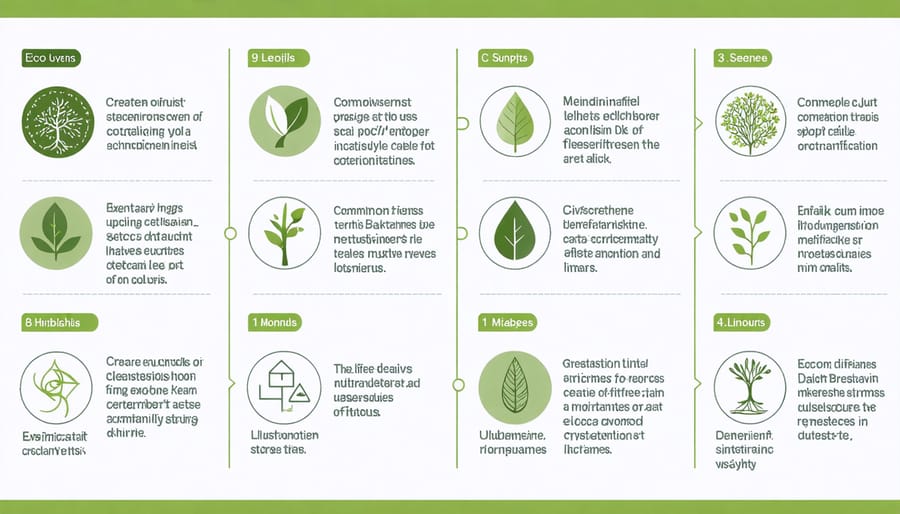
Price vs. Quality Considerations
When it comes to eco-friendly yarn, the price tag might initially make you pause. Yes, these sustainable alternatives often cost more than conventional options, but there’s more to the story than just numbers. As someone who’s been crafting for years, I’ve learned that investing in sustainable materials actually saves money in the long run.
Eco-friendly yarns, particularly those made from organic cotton, hemp, or recycled materials, typically offer superior durability compared to their conventional counterparts. They maintain their shape and color better, resist pilling, and often become softer with each wash without losing their integrity. This means your finished projects last longer and look better, reducing the need for replacements.
Consider this: a sweater made with quality eco-friendly yarn might cost 30% more upfront but last twice as long as one made with conventional yarn. Plus, sustainable yarns often provide better stitch definition and drape, resulting in more professional-looking finished pieces.
To maximize value, look for sales at your local yarn shop, buy in bulk when possible, and join crafting communities where members share deals on sustainable materials. Remember, the true cost of yarn isn’t just about the price tag – it’s about the lasting value of your creations and their impact on our planet.
Choosing eco-friendly yarn isn’t just about being kind to our planet – it’s about creating something truly special with materials that tell a meaningful story. As someone who’s made the switch, I can tell you that working with sustainable yarns brings an extra layer of joy to every project. Not only do you get to craft beautiful pieces, but you also become part of a growing community of conscious creators making a real difference.
By opting for eco-friendly yarns, we’re supporting sustainable farming practices, reducing chemical usage, and preserving traditional crafting methods. The best part? These yarns often result in higher-quality, longer-lasting pieces that you’ll treasure for years to come. Whether you’re knitting a cozy sweater or crocheting a delicate shawl, knowing that your creativity aligns with environmental stewardship makes every stitch more meaningful.
Remember, every skein of sustainable yarn represents a choice for a better future – for our craft, our planet, and generations to come.

